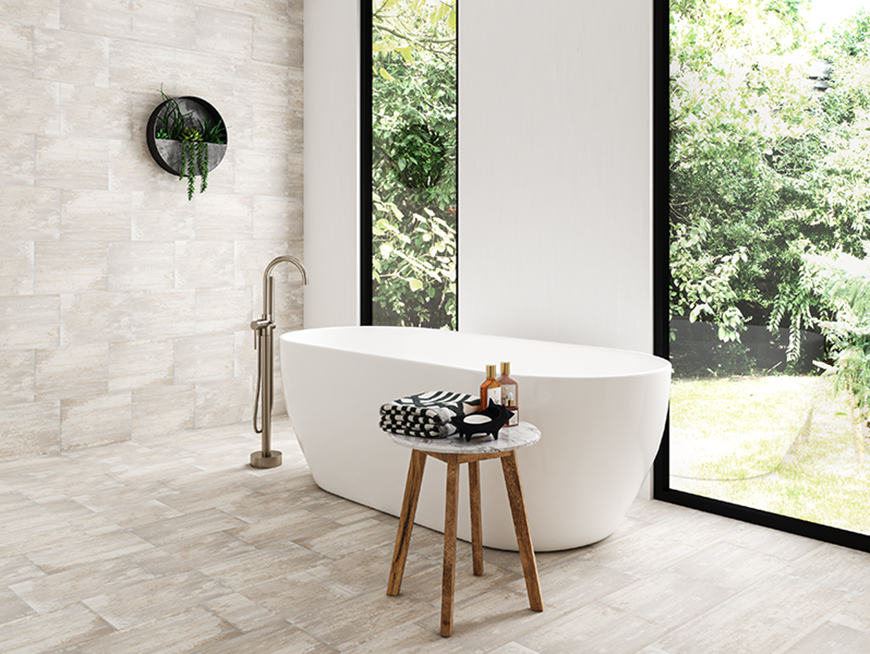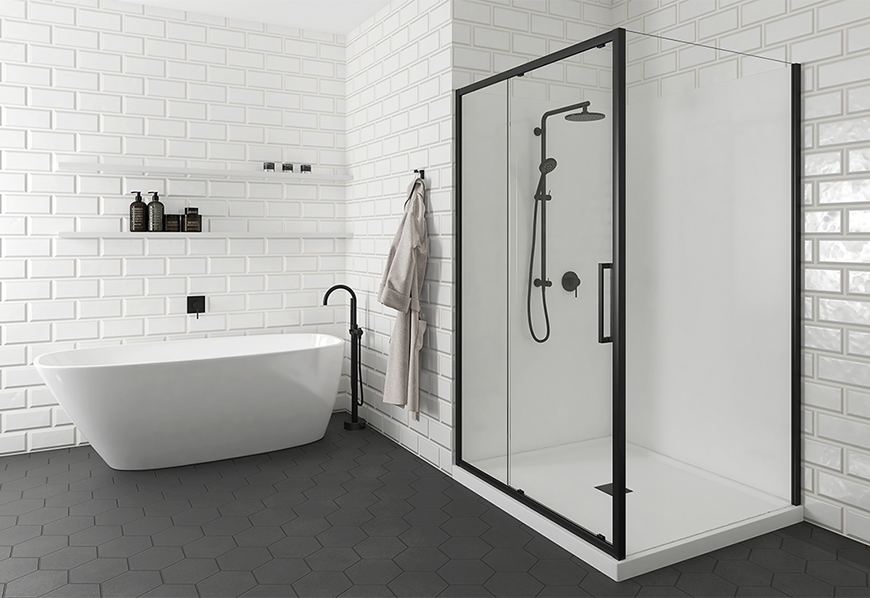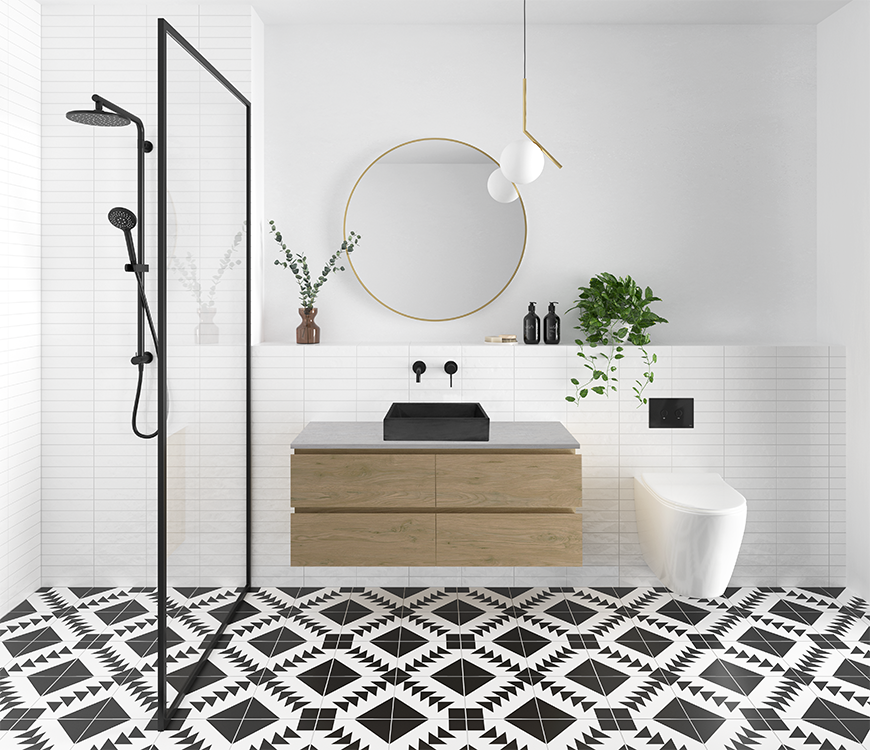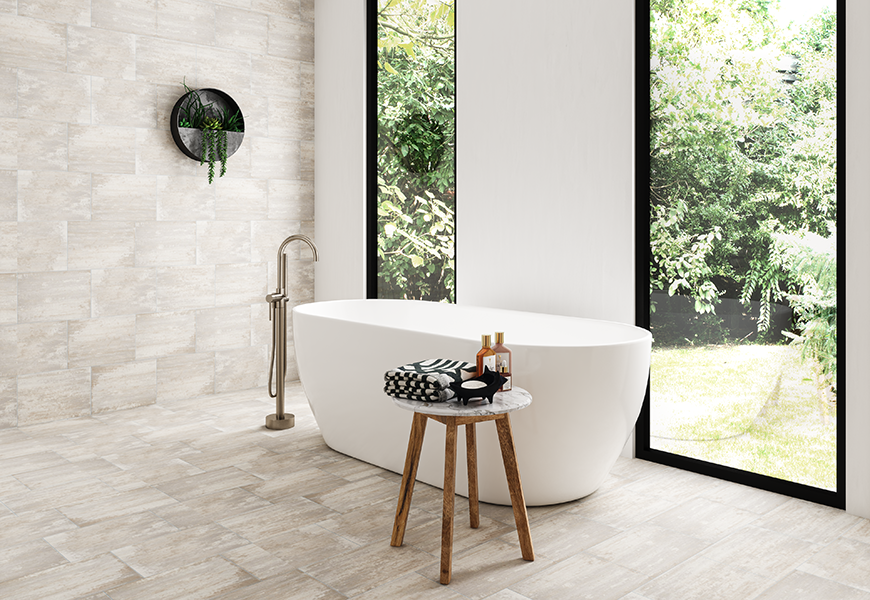A Complete Guide to Bathroom Renovations
Monday 10 April 2023

Bathroom renovations can be exciting and daunting at the same time. They are exciting because they allow you to transform an old, outdated space into a modern, functional, and beautiful bathroom. However, they can be daunting because they involve several steps, from planning and designing to purchasing materials and hiring contractors.
But don't worry!
In this complete guide to bathroom renovations, we will walk you through the process of remodeling your bathroom, whether you are a beginner or have some experience in home improvement and DIY.
Why bathroom renovation projects are important
Bathrooms are some of the most frequently used spaces in a home. As such, they are prone to wear and tear over time. Bathroom renovation projects are important because they help restore the functionality and aesthetics of a bathroom.
They also improve the overall value of a home, making it more attractive to potential buyers. Additionally, bathroom renovations can help reduce energy and water consumption, which in turn saves money in the long run.
Benefits of renovating a bathroom
Renovating a bathroom can provide numerous benefits for homeowners. Not only can it improve the functionality and safety of the space, but it can also increase the value of a home and reduce energy and water consumption.
In addition, a bathroom renovation can transform a dull and outdated space into a beautiful and luxurious retreat where you can relax and unwind.
Whether you're planning a complete bathroom remodel or just a few simple upgrades, the benefits of renovating a bathroom are well worth the investment. Here are four of the main benefits of a bathroom renovation:
1. Increased home value
Bathroom renovations are one of the most profitable home improvement projects. They can increase the value of a home significantly, especially if the renovation is done well. According to the National Association of Realtors in the USA, bathroom renovations can yield up to 67% return on investment when selling a home.
2. Improved functionality
A bathroom renovation can improve the functionality of the space, making it easier to use and more efficient. This can be achieved by adding storage, changing the layout, or installing new fixtures and appliances.

3. Enhanced safety
Renovating a bathroom can also enhance safety. For instance, you can install slip-resistant flooring, grab bars, and higher toilets to prevent slips and falls. Additionally, installing a water-saving toilet, faucet, and showerhead can help reduce the risk of scalds and burns.
4. Better energy efficiency
Renovating a bathroom can also help reduce energy and water consumption, leading to lower utility bills. For instance, installing low-flow toilets, showerheads, and taps can save water, while using LED lighting can save electricity.
How to remodel bathrooms for beginners
Remodeling a bathroom can seem like a daunting task, especially for beginners. However, with proper planning, design, and execution, it can be a rewarding and enjoyable project. Remodeling a bathroom can also be a great way to learn new skills and gain experience in DIY and home improvement. Whether you're planning a simple update or a complete renovation, these tips will provide you with the essential advice you need to get started on your bathroom remodeling journey.
1. Plan and design
The first step in remodeling a bathroom is to plan and design. This involves determining what you want to achieve with your bathroom renovation project, such as upgrading the fixtures, changing the layout, or adding more storage. You should also consider your budget, timeline, and the style you want to achieve.
2. Choose materials
Once you have a plan and design in place, you should choose the materials for your bathroom renovation project. This includes flooring, countertops, cabinets, and fixtures such as sinks, toilets, and showerheads. When choosing materials, consider durability, functionality, and style.

3. Hire a contractor
Hiring a contractor is essential for a successful bathroom renovation project. A contractor can help with the planning, design, and execution of the project, as well as ensure that it is completed within the allotted time and budget. When choosing a contractor, consider their experience, reputation, and licensing.
4. Demolition
The next step in remodeling a bathroom is demolition. This involves removing old fixtures, tiles, and cabnets. If you are demolishing walls, it's important to consult a professional to ensure that you don't damage any electrical or plumbing systems.
5. Plumbing and electrical work
If you are making any changes to the layout of your bathroom, you will need to perform plumbing and electrical work. This includes installing new pipes and electrical wiring, as well as relocating existing ones. It's important to hire a professional plumber and electrician to ensure that the work is done safely and correctly.
6. Install new fixtures
Once the plumbing and electrical work is completed, you can install new fixtures such as sinks, toilets, and showerheads. You should also install any new cabinets, countertops, and flooring at this point. It's important to follow manufacturer instructions carefully to ensure that everything is installed correctly.
7. Paint and finish
After all the fixtures and materials have been installed, it's time to paint and finish the bathroom. You can choose a paint colour that complements the new fixtures and materials, and add finishing touches such as towel bars, mirrors, and decorations.

The best way to remodel a small bathroom
Remodeling a small bathroom can be challenging because of limited space. However, with careful planning and smart design, you can transform your small bathroom into a functional and beautiful space.
1. Choose light colours
Choosing light colours for the walls, floors, and fixtures can make a small bathroom feel more spacious. Light colours reflect more light, creating an illusion of more space. You can also add mirrors to reflect even more light.
2. Maximise storage
Maximising storage is essential in a small bathroom. You can do this by installing cabinets and shelves that go all the way up to the ceiling. You can also use baskets and bins to organise small items.

3. Use space-saving fixtures
Using space-saving fixtures such as wall-mounted toilets, corner sinks, and sliding shower doors can help save space in a small bathroom. You can also choose a smaller bathtub or eliminate it altogether and opt for a shower instead.
4. Use vertical space
Using vertical space can help make a small bathroom feel larger. You can install shelves or cabinets above the toilet or use a tall and narrow storage unit to store towels and other items.
5. Keep it simple
Keeping the design simple can help make a small bathroom feel less cluttered. Choose a few statement pieces, such as a colourful shower curtain or a unique tile design, and keep the rest of the design minimal.

What is trending in bathrooms in 2023?
Based on current trends and predictions for home design and décor, some possible bathroom trends in 2023 could include natural materials, warm and earthy colour palettes, smart technology integration, and an emphasis on sustainability and eco-friendliness. Additionally, larger, and more luxurious bathrooms with spa-like features may become more popular as homeowners prioritise self-care and relaxation. Here are some of the bathroom trends to look out for in 2023:
- Natural materials: There has been a growing trend towards using natural materials in home design, and this is expected to continue in the bathroom as well. Materials such as wood, stone, and marble can add warmth and texture to the space and create a spa-like atmosphere.
- Warm and earthy colour palettes: In contrast to the cool, minimalist aesthetic that has been popular in recent years, warmer and earthier colour palettes are expected to become more popular in the coming years. Colours such as terracotta, ochre, and sage green can create a cosy and inviting atmosphere in the bathroom.
- Smart technology integration: As technology continues to advance, smart features are becoming more common in the bathroom. This could include features such as voice-activated lighting, temperature control, and smart mirrors that can provide information and entertainment.
- Sustainability and eco-friendliness: With a growing emphasis on sustainability and eco-friendliness, homeowners may be more likely to choose materials and fixtures that are environmentally friendly. This could include low-flow toilets and showers, recycled or natural materials, and water-saving taps.
- Larger and more luxurious bathrooms: As homeowners prioritise self-care and relaxation, larger and more luxurious bathrooms with spa-like features may become more popular. This could include features such as soaking tubs, steam showers, and heated floors.
Bathroom renovation FAQs
What is a timeless colour for a bathroom?
When it comes to choosing a timeless colour for a bathroom, it's best to go with a neutral shade that will stand the test of time and won't go out of style. Some of the most popular and timeless colours for bathrooms include white, grey, beige, and taupe. These neutral shades can create a calm and relaxing atmosphere in the bathroom and provide a versatile backdrop for a variety of décor styles and accessories.

What flooring looks best in a small bathroom?
When it comes to flooring for a small bathroom, it's important to choose a material that is durable, moisture-resistant, and visually appealing. Some flooring options that can look great in a small bathroom are; ceramic or porcelain tile, vinyl, natural stone and engineered wood.
What colours make a small bathroom look bigger?
When it comes to making a small bathroom look bigger, colour can play a big role. By using certain colours on the walls, floors, and accessories, you can create the illusion of more space and make the bathroom feel more open and airy. Here are some colour schemes that can make a small bathroom look bigger while still adhering to personal style:
Light colours: Light colours such as white, cream, beige, and pastel shades can reflect light and make the bathroom feel more spacious. These colours can also create a clean and fresh look, which can help to make the bathroom feel more inviting.
Monochromatic colour schemes: Using a monochromatic colour scheme, where different shades of the same colour are used throughout the bathroom, can create a cohesive and visually appealing look that can make the space feel more open.

Cool colours: Cool colours such as blue, green, and grey can create a sense of calmness and serenity in the bathroom, which can make it feel more relaxing and spacious.
Bold accents: While it's best to stick to light and neutral colours for the walls and floors, adding bold accents such as colourful towels or a vibrant shower curtain can create a focal point and add a pop of colour to the space.
Summary
Bathroom renovations are an important and rewarding home improvement project. They can increase the value of a home, improve functionality and safety, and reduce energy and water consumption.
When remodeling a bathroom, it's important to plan and design carefully, choose materials wisely, hire a professional contractor, and follow manufacturer instructions closely.
If you are remodeling a small bathroom, consider choosing a colour pallet that gives the illusion of more space, maximise storage, use space-saving fixtures, use vertical space, and keep the design simple.
With these tips in mind, you can transform your bathroom into a space that you will love for years to come.